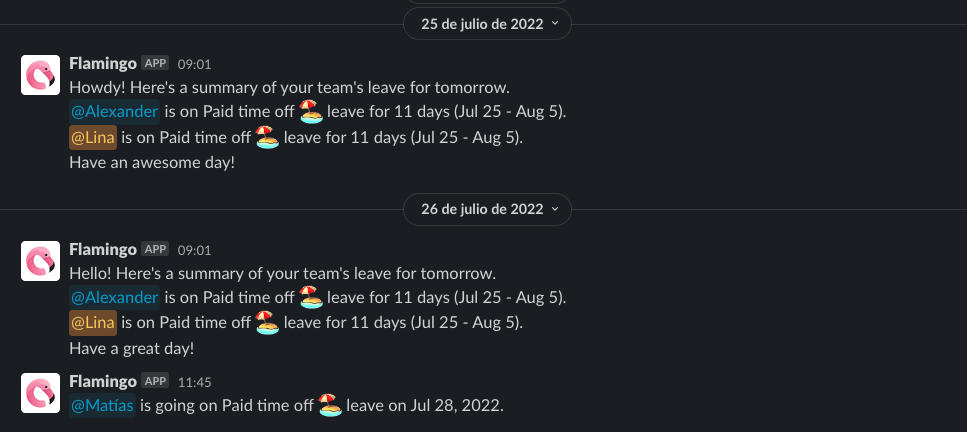April 23, 2024
What is Garden Leave? (Aka Gardening Leave)
Key Takeaways:* Garden Leave, or Gardening Leave, is when an employee leaves their job and is asked to stay a...

Paid Time Off (PTO) is an essential employee benefit. Though not required by federal law in the US, every company should give their employees the chance to take time away from work without losing pay.
There are some complexities when it comes to managing your PTO policy, which is what this article is going to help with. We’re going to explain fully what paid time off is, how it should work, a little about different PTO policies, and more must-know information about paid time off.
PTO, or paid time off, is when employees take time off from work, while being paid their regular wage or salary.
Generally speaking, PTO refers to any time employees are absent on a day they usually work, while still being paid.
PTO doesn’t always work the same in every business. There are some things, like what situations employees can take PTO, what types of absences are covered, and how PTO accrues, that can be different from company to company.
In most cases, PTO works like this:
The more complex parts come after, including:
We’ll clear up all these questions, and more, by the end of this post.
Businesses largely have the freedom to shape their own PTO policy as they wish, as long as they comply with any relevant laws.
Let’s look at a few common PTO polices, and how they work.
Traditionally PTO policies work more or less as we outlined above. Employees have a set number of PTO days (or hours if you pay employees hourly). They can take from this balance throughout the year, for vacation time or other reasons.
Yet even “normal” PTO polices can work a little differently from one company to the next. The biggest difference is how PTO banks work, and how employees get PTO added to their bank.
PTO bank systems work on either an accrued PTO or lump-sum basis.
With accrued, employees slowly earn more PTO days/hours over time. For example, they may earn 1.5 paid vacation days every month.
With a lump-sum PTO policy, employees get a set amount of paid days off per period (such as a year), all available to them at the start of the period.
Neither is necessarily right or wrong – it’s up to what the company believes is best.
At the end of the year, or another set period, any unused PTO may expire, it may be paid out to the employee as cash, or it may accrue infinitely. This is again open to what the company wants to do.
Click here to read more about accrued PTO vs lump-sum, and which may fit best for your business.
An unlimited PTO policy is a bit different to traditional PTO policies, in that there is no PTO bank.
Employees can take time off when they like (within reason, and usually subject to manager approval), and they’ll be paid their normal working rate.
This will usually cover all types of leave, including vacation days, sick leave, personal days, etc.
A lot of modern companies are choosing to go this route, which offers more freedom, flexibility and trust for employees.
Click here to read more about unlimited PTO and how it works.
Flexible time off, or FTO, is when a company’s PTO policy is less structured than a normal PTO policy might be.
FTO is often used as a catch-all term for any kind of PTO policy that promotes freedom and flexibility. Some might consider unlimited PTO an example of this.
Another example of FTO could be where there’s some agreement made between the employee and the company for the employee to be able to take time off when they need, in exchange for working extra another day, or just getting paid their normal weekly/monthly salary.
For the question “what is PTO”, many see this to mean vacation time/vacation days.
Technically, paid time off includes any time you take time away from work and still get paid. So sick days would be paid time off too, for example.
Yet PTO and vacation time is often used interchangeably. So understand this may be the case when you see a company talking about their PTO policy.

Each company’s policy may include different things within the definition of paid time off.
Technically, paid time off should be considered any kind of paid absence from work. Sometimes, however, PTO policies may separate paid time off from things like sick leave and parental leave.
Whether they have separate PTO balances or not, it’s still common practice to differentiate between different types of PTO. These may include:
Learn More: dive into all the possible types of leave you can consider offering in your business.
It depends on your company’s location, but in the US at least, federal and state laws do not require companies to offer PTO to employees.
The Family Medical and Leave Act (FMLA) entitles eligible workers to a minimum of 12 weeks of job-protected, unpaid time off for certain reasons. But it’s up to the company’s own discretion whether this is paid, whether they offer paid sick leave, paid vacation days, or any other form of PTO.
Worldwide, many countries and states do mandate PTO, sick leave, and other forms of paid leave as a requirement. Ensure you’re familiar with the law in your area, to know where you stand.
Just a reminder that we are not legal professionals! To be sure of your responsibilities under the law, and to know whether you need to offer PTO benefits in your company, make sure you check with employment lawyer.
Whether or not it’s a legal requirement, there are a lot of benefits to providing a generous PTO policy in your business.
Dynamite Jobs used Flamingo to organize their leave management system and ensure their team members were taking enough leave. Click below to read their story.
In the US, private sector workers have an average of 10 paid days off per year, after one year of service time. It’s slightly higher for government workers.
Around the world, most nations in the OECD require companies to provide somewhere between 20-30 PTO days per year, along with a number of paid public holidays.
In some cases, PTO balances reset to the same number at the end of the year. In others, PTO carries over to the next year, and employees can bank these PTO days to take at later time.
Sometimes, a company will allow carryover, but limit the total number of days employees can bank up at once.
Unused PTO at the end of the year may expire, or it may add to the employee’s balance for the following year.
Some areas have laws dictating what happens to unused time off (see our article on “use it or lose it” PTO policies). If there is nothing required by law, it up to the company to decide.
PTO is generally paid out when an employee leaves their job. Any outstanding holiday pay will be included in their final paycheck.
Sometimes, companies will also allow PTO to be paid out as cash, instead of the employee actually taking time off. This again is something that is up to each company to decide whether or not to allow.
It’s good practice for employees to take regular vacations, to stay fresh and avoid burnout. Some experts suggest taking a vacation at least every 62 days. Others suggest it’s best to take multiple vacations per year, each at least 7 days long, to maximize the positive effects. The frequency thus depends on how much vacation leave is available to the employee.
There is usually a standard system for employees to request time off. This should be outlined in the company’s leave policy.
This again depends on company policy. It’s best practice to provide as much notice as possible, to make it easier for to cover for the person’s absence.
For some types of PTO, such as sick leave and personal days, days or weeks of advance notice may not be possible. In this case, it’s still best to inform the necessary person as soon as possible.
The key to being able to offer a generous amount of PTO, without having it disrupt productivity, is to set up an effective system to track and manage PTO.
Small teams could use a spreadsheet to do this. But for teams of more than a few people, PTO software is a necessity.
You’ll want to use something like Flamingo to do this. Flamingo streamlines PTO requests, the approval process, tracking upcoming absences, as well as tracking and reporting on trends.
It helps everyone stay informed, and takes the friction out of requesting and tracking time off.

Here are some other tips for managing PTO:
Learn more about the benefits of using Flamingo as your company’s vacation tracker.
A lot of people talk about the benefits of working like a lion.
Working like a lion means mixing focused, intense sprints with downtime to rest, recover and prepare for the next sprint.
This is a more efficient way to work, and keeps employees happier, more engaged and more motivated, than the opposite way of working – slowly, consistently grazing from 9 to 5, day in day out.
Working like a lion is only possible when you offer employees paid time off. It gives them enough time to disconnect, and to properly rest and recharge.
In addition to paid vacation time, you should offer enough paid sick leave to allow employees to get better whenever they’re sick, injured or for any reason unwell. Keeping them at work when they’re less than a hundred percent is just going to prolong their sickness, and prolong the period where they cannot be fully productive.
Offering PTO means thinking long-term. You could be more profitable in the immediate future by denying PTO and requiring employees to work long hours. But the businesses who see PTO as an investment, rather than an expense, are the ones who last.
Flamingo makes managing your team’s paid time off a breeze.